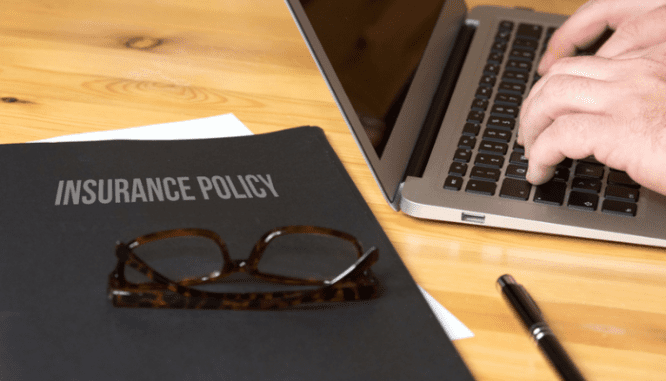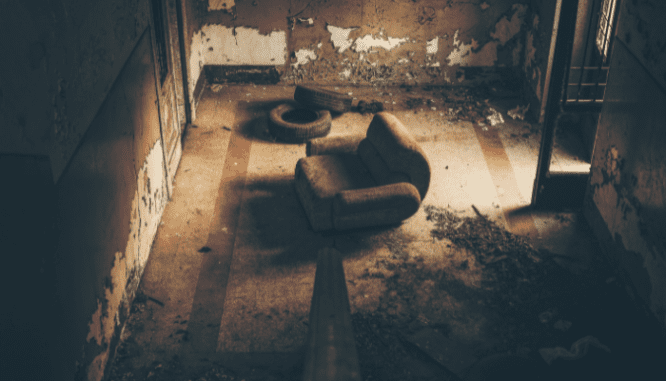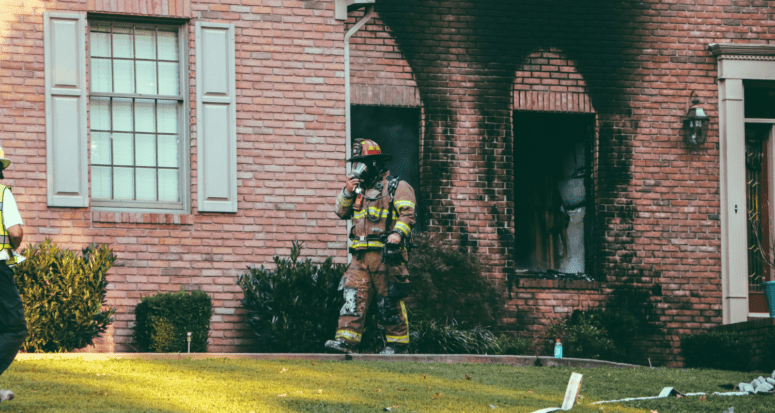What Happens to a Home Sale in a Fire? A Homebuyer’s Road Map
- Published on
- 4 min read
-
 Evette Zalvino Contributing AuthorClose
Evette Zalvino Contributing AuthorClose Evette Zalvino Contributing Author
Evette Zalvino Contributing AuthorEvette is just your average HGTV fan who dreams of having a home worthy of being on one of those shows. When she isn't writing for HomeLight, she's working at her local real estate office. In her downtime, you'll find her searching for the next great hiking trail in her area.
A house fire is a homeowner’s worst nightmare. It isn’t just a matter of financial loss, but you’ve spent years building a life there. Your possessions, memories, and hard work? All up in smoke. It’s devastating, to say the very least.
On the flip side, imagine if you found the house of your dreams and it’s under contract, closing day is just a few short days away, and it falls victim to a fire? Understandably, you’re going to panic and wonder: What happens to a home sale in a fire? Will the sale fall through? Will you be able to renegotiate the terms of the contract? Will the closing be delayed while repairs are made? It’s a lot to be concerned about.
In this guide, we’re going to walk you through the different steps, scenarios, and options you may have in the event that the house you want to buy is in a fire.

Step 1: Talk to your agent
Your real estate agent is going to be your crutch while you’re navigating this unfortunate incident. There is usually a stipulation in the purchase contract that says the home must be in the same condition as when you made your offer — free of additional damages or defects. In tax and legal circumstances, when a home is damaged or destroyed, it’s known as casualty loss.
What does casualty loss mean?
Casualty loss states that if a portion of the home or the property is “destroyed by fire, explosion, accident, an act of the public enemy, natural disaster or another similar event,” the seller must notify the buyer immediately after learning of the event.
The buyer is not obligated to purchase a damaged property. If they choose to move forward with the purchase, the purchase price will likely be reduced by whatever the estimated damages will cost to repair.
Lisa Jacquez, assistant to Californian top-selling agent, Janet Anderson (who sells homes 27% faster than the average agent in the Tracy area), gives a simplified explanation:
“In California, the seller is responsible for any damage that happens before handing over the keys because they’re still the home’s owner — they’re still in possession of the home. But, you’ll have to look at the contract because each state is different and will say who’s responsible for the repairs.”
Step 2: Assess the damage
Sometimes a sale is terminated if the property is damaged to the point where the home is uninhabitable.
In the Connecticut Supreme Court in 1935 (Anderson v. Yaworski), Anderson took Yaworski to court to recover his deposit after the home was in a fire before the deal closed.
The court ruled in Anderson’s favor because Yaworski couldn’t uphold her end of the deal — to give the home to Anderson in the same condition as when he submitted the deposit. So Anderson was able to back out and get his money back.
On the other side of the coin, there’s often a stipulation in the contract that states that if the damage amounts to less than 5% of the home’s purchase price (some contracts will go up to 10%), the seller is responsible for making repairs — as long as they can get them completed before closing.
If the damage is greater than the amount outlined in the contract, both parties will need to come to an agreement because the seller isn’t obligated to do the repairs, and the buyer can back out of the deal with no repercussions.
How are damages assessed?
A restoration company will have to come to the property to assess the damages. They’ll provide a list of the damages, estimate the cost to repair everything, and give an estimated time frame to get the job done.
“The insurance company will come in after the restoration company to assess the damages and then compare the reports and then decide the extent of the damage,” Anderson adds.
Note: Be aware that if the property is damaged due to a wildfire or another widespread disaster, there will likely be a delay because many other homeowners are in the same predicament.

Step 3: Inquire about the seller’s insurance policies
After the damages have been assessed, ask your real estate agent to inquire about the seller’s insurance policies. If the seller still holds a mortgage on the property, they will have homeowner’s insurance. If they’ve paid off their mortgage, they may be one of the 5% of homeowners who do not have homeowner’s insurance.
Standard homeowner’s insurance policy
The lowest level homeowner’s policy (also known as an HO-2) will have three types of coverage:
- Dwelling coverage will cover damage caused to the entire structure of the home, to built-in appliances, and to attached structures such as a garage. With that said, it doesn’t cover everything, and it’s recommended to add optional additional coverages to your policy.
- Contents coverage will cover loss of personal property in the event of an event covered by the policy. With this coverage, you’ll receive the value of those items outlined in your policy.
- Personal liability will cover bodily injury if someone injures themselves while on your property or in your home.
An HO-3 is the most common coverage policy that will cover all risks on your structure, but may specifically exclude certain types of events or coverage over non-attached features and personal property. HO-5 coverage is the most comprehensive policy because it will generally cover the dwelling, your personal property, and other structures that are not attached (shed, gazebo, workshop, and so on) without limitation to the cause of the damage.
Optional insurance coverages
Other optional insurance policies the owner may have include:
- Replacement cost insurance is an extra layer of coverage that will help rebuild the home in case of a total loss. It’s calculated by using the cost it would take to rebuild the home physically. It will not factor in the price of the land.
- Extended replacement cost insurance is the ultimate in insurance protection. It’s similar to the replacement cost insurance, except instead of pricing the cost to build the home when it was first constructed, it will cover the cost to rebuild the home with an additional 20% to 25% over the home’s value.
Suppose the seller has an actual cash value insurance policy. In that case, the insurance company will determine the claim’s value by assessing how much it would cost to make repairs, and reducing that total amount for depreciation (wear and tear). In other words, if the seller has this policy, the insurance company isn’t required to cover repairs so it’s “like new.”
How do insurance companies assess fire damage?
Typically, the insurance company will send a company adjuster (who works for the insurance company) to come to the property and inspect the home for fire damage. Upon arrival at the property, the assessor will look at the home’s exterior to make sure it’s even safe to enter the property.
When inside, the assessor will first look at the basement, or the foundation if the home doesn’t have a basement. They’ll look for things like cracks, or whether the area is visibly broken or flooded due to water.
If they don’t see these issues, the adjuster will continue to go through the rest of the house and inspect the structural integrity of the entire building. They’ll take note of load-bearing walls and whether there’s evidence of cracking, slippage, or soot damage.
The adjuster will also look at walls with a porous material because it will hold moisture, odors, and stains. If there is moisture, it could lead to bacteria and mold growth, which could weaken structural supports.
Finally, the adjuster will move on to looking at any superficial damage done to the home.
Out of every 100 insurance claims, only 0.28 are for fires. Although house fires are rare occurrences, they are among the most expensive claims to file; the average claim settlement is around $79,000.
Why so expensive? Fires can cause significant structural damage or even a complete loss of the home.
Step 4: Talk to your lender
Next, you’ll need to contact your lender. If the damage is less than 3%, they’ll usually approve a request to increase the loan. However, if the damage is more than that, you’ll need to disclose this to the lender, and the lender will likely require a new appraisal.
The lender may agree to adjust the terms of the loan, change the purchase price, and then everything will go back to the underwriter. If this happens, the timeframes in the contract will need to be amended.
Sometimes, if the damage is bad enough, the lender may cancel the loan altogether. “If the house isn’t inhabitable, the lender absolutely won’t move forward; they aren’t going to want to provide financing on the house like that,” explains Anderson.
Step 5: Decide if you want to continue or walk away
Taking all that you’ve learned so far about what could happen to the sale in case of a fire, now you have to make a decision: walk away or go forward with the transaction.
When you’re trying to decide, you’ll need to take everything we’ve covered into consideration. You’ll need to look at the overall damage the fire caused and then look at the contract to assess your options. If the damages are less than the percentage in the contract, you may have to move forward (or risk losing your deposit) — but if it’s more, you could walk away.
You also have to consider what kind of insurance the seller has. Will their insurance cover adequate repairs? If the homeowner doesn’t have insurance, will they pay for the damages, or will they reduce the price by how much it would cost to make the repairs?
Then, on top of all of this, you need to see if your lender will be flexible, or they are going to end the deal right then and there. If this is the case, you’ll need to go through the hassle of finding a new lender, which could mean that you’ll get a different mortgage interest rate, and you’ll have to go through the appraisal process again, and more.

Step 6: Get a home inspection
If you’re in love with the property and decide that you want to go through with the transaction, you will want to get another home inspection once repairs have been made. You want to make sure repairs have been done correctly, that the proper permits have been acquired, and that it’s safe to live in.
Depending on the damage that needed to be repaired, you may want to request specialty inspections. For example, if the roof needed to be replaced, have a roof inspector come out. If the electrical work needed to be redone because that was the source of the fire, you’d absolutely want a certified electrical inspector to come out.
What happens to a home sale in a fire?
The days leading to closing should be exciting because you’re so close to being able to start a new chapter. So when the house you want to buy is in a fire, it’s devastating! It might feel like the cosmos are working against you, but don’t despair because you don’t have to start the house hunt all over again — you do have options.
Remember, your real estate agent is an expert, and they’ll guide you through every step in the process. They’ll offer their professional opinion about what would be in your best interest. In a horrible situation like a house fire during escrow, having a top-selling agent on your side will be a lifesaver.
Header Image Source: (Andrew Gaines / Unsplash)
